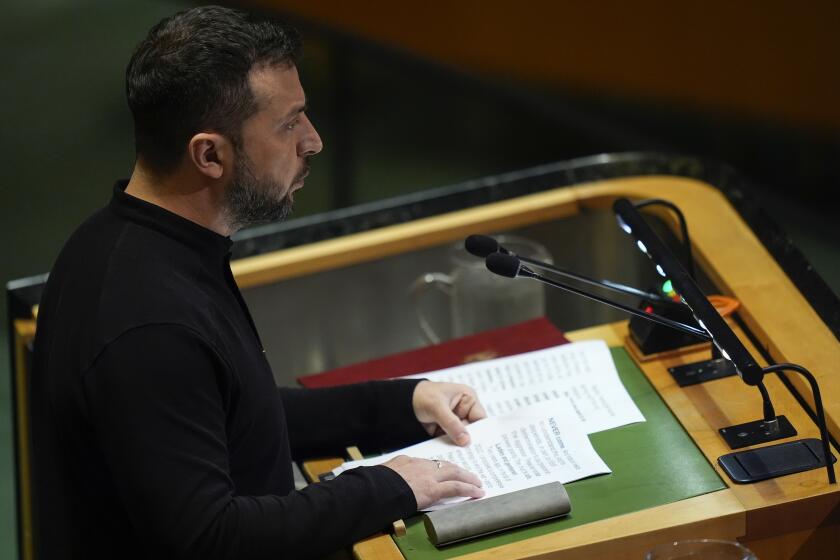Issue of Production Quotas Shelved : OPEC Weighs Change in Oil Prices
On a note of almost desperate urgency, the 13 oil ministers of the Organization of Petroleum Exporting Countries began bargaining here Monday in the face of the world oil glut and falling spot-market prices.
Two weeks ago in Vienna, the same ministers failed to reach any agreement on either price cuts or lower production quotas, and, as they gathered for another try here, OPEC’s president, Indonesian Oil Minister Subroto, acknowledged that “at no time in our history has our solidarity been put to a greater test than now.”
Warning that another failure “could lead to an oil crisis far greater than anything witnessed in the past,” he told reporters:
“We are determined to stabilize the oil market and maintain prices because it is in the interest of producers as well as consumers. We want cooperation, not confrontation between OPEC and non-OPEC producers and consumers. Either all partners involved in the oil market make a concerted all-out effort, or we all let go and suffer the consequences. Non-OPEC producers will suffer the most.”
As a first step out of their own impasse, the ministers decided at the outset to shelve any attempts at this meeting to agree on production quota cuts. Instead, they will concentrate on getting agreement on a new range of prices.
After a brief morning session, they met for two hours in the evening to hear initial reports on price discussions that took place in a special subcommittee during the weekend. They agreed to begin an intensive negotiations on various price proposals this morning.
Price Pressure From Mexico
The OPEC benchmark price is now $28.65 per barrel for Saudi light crude, with Saudi heavy crude at $26.50. On the spot market, however, oil is selling regularly at $2 or more below the OPEC benchmarks. Since the Vienna meeting, the cartel has come under additional pressure from Mexico, which cut its prices by an average of $1.24 per barrel 10 days ago and is currently selling its light crude in Europe at $26.25.
But OPEC remains split. Its radical members--Algeria, Libya and Iraq--oppose any price cuts. Iraq is even demanding an increase in its production quota in spite of the falling market. On the other hand, Saudi Arabia’s oil minister, Sheik Ahmed Zaki Yamani, is pressing hard for a downward revision of the price structure.
Subroto disclosed that OPEC’s total production is down to 14.5 million barrels per day--well below the organization’s self-imposed production ceiling of 16 million barrels and less than half of the peak OPEC production of 30.9 million barrels reached in 1979. Non-OPEC producers, meanwhile, have boosted output to 22 million barrels per day, with Britain now among the world’s top producers.
To keep the bottom from falling all the way out of OPEC’s pricing structure, Saudi Arabia, the cartel’s largest producer, has cut its output to only 2.4 million barrels per day, or barely half of its OPEC quota. Moreover, there are indications that Saudi Oil Minister Yamani has backed away from earlier threats to turn up the Saudi tap and flood the market if other OPEC members do not agree to lower prices.
By shelving the perennial argument over individual production quotas, the OPEC ministers have probably made it easier to get an agreement on prices at this meeting. But it is by no means certain, and a failure could open up a price free-for-all.
The 13 OPEC nations are Algeria, Ecuador, Gabon, Indonesia, Iran, Iraq, Kuwait, Libya, Nigeria, Qatar, Saudi Arabia, the United Arab Emirates and Venezuela.
More to Read
Sign up for Essential California
The most important California stories and recommendations in your inbox every morning.
You may occasionally receive promotional content from the Los Angeles Times.










